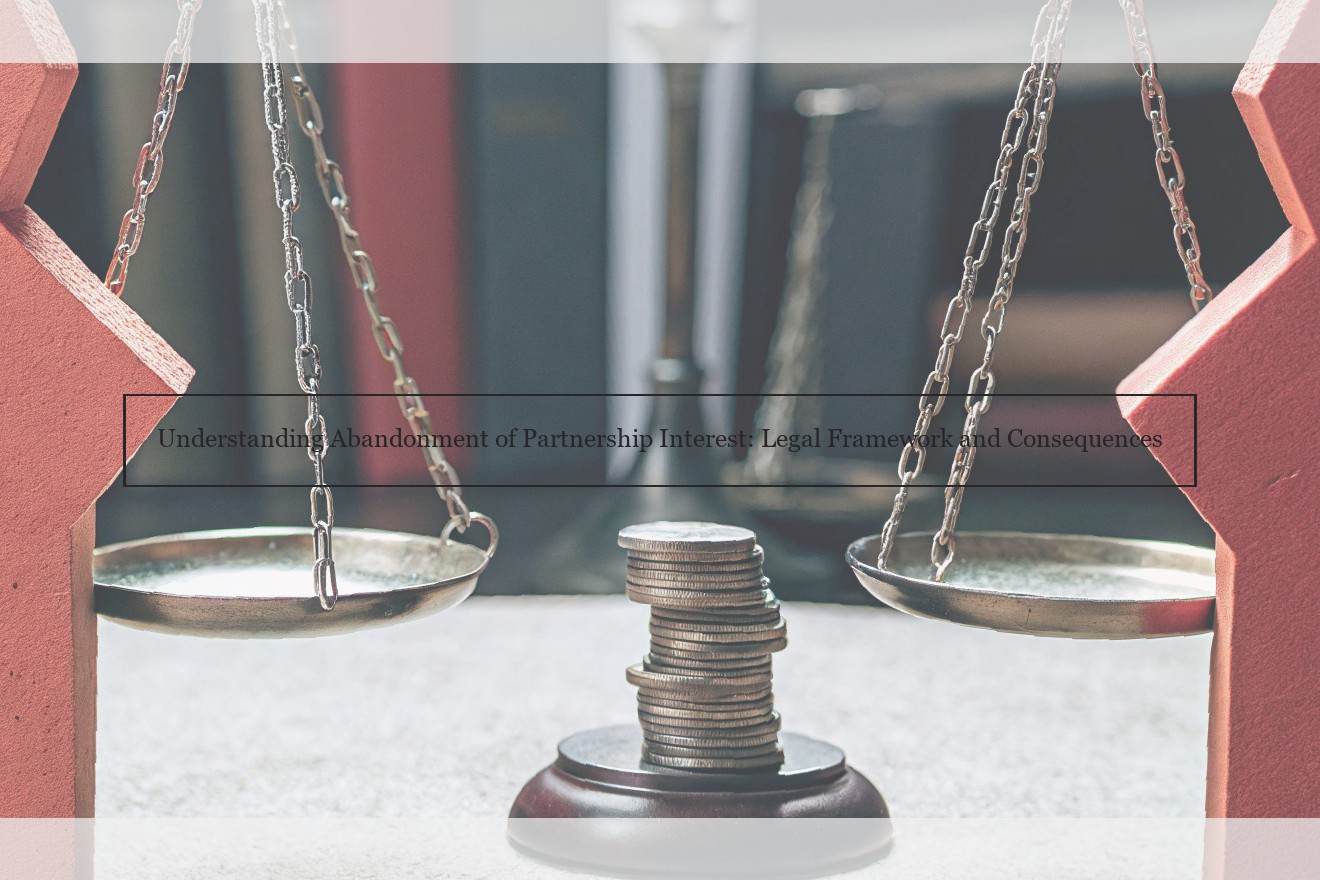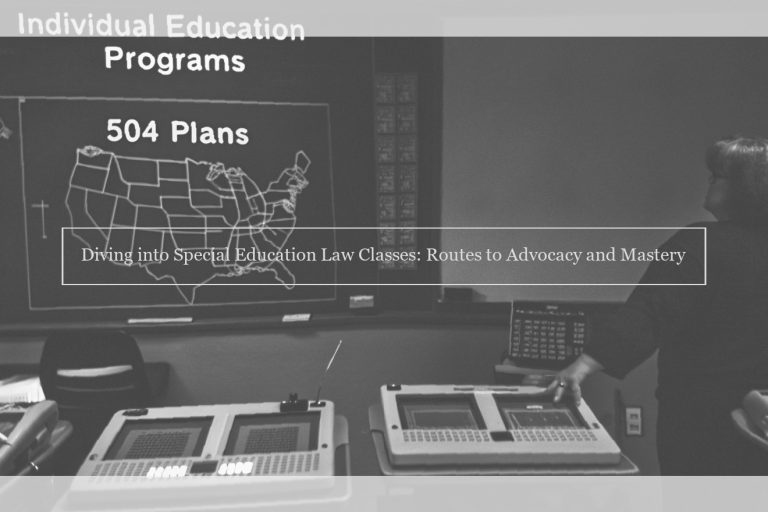Abandonment of Partnership Interest Defined
Abandonment of partnership interest can occur in a number of ways. It can be voluntary or it can be a result of unilateral action by the partnership or an individual partner. It can involve a minority or majority interest, and it may involve the withdrawal of a partner. It can even occur when the partnership is terminated and one of the partners ends up with the assets—albeit not intentionally.
When a partner abandons an interest, they abandon their portion of the ownership, the future earnings of that portion, as well as the partnership’s debts to the extent that their capital account has a negative balance. Although the term abandonment of partnership interest is used in Texas common law, the Texas Revised Partnership Act does not refer to that particular cause of dissolution. However , the Texas Uniform Partnership Act does provide at 11.050(a)(5) dissolution for "a partner’s abandoning his interest in the partnership and the partnership agreement provides for the partnership to be dissolved on that event." Even though partnership interests do not currently exist in Texas partnerships, such provision could presumably be invoked by a partnership when forced to wind up and liquidate because a partner has evidenced an intent not to continue to carry on a business as a partnership, such as by ceasing his involvement in the business and giving no intention of returning. The voluntary abandonment of a partnership interest occurs when a partner no longer wants to possess the interest. The partner has committed his intention to withdraw from the partnership and the partner is no longer liable for the partnership’s obligations incurred after his withdrawal. The voluntary withdrawal will usually result in the partner no longer receiving distributions, but he will no longer have to make additional capital contributions nor make additional liability payments.

Legal Basis for Abandonment
Partnership law is governed by the statutes of each state. By state law, the partnership business may be conducted by general partners only, or by both general partners and limited partners. Pursuant to the California Corporations Code, if a partner enters into a written withdrawal agreement with the other partner or as otherwise prescribed in the partnership agreement, the withdrawal will be as stated in the withdrawal agreement.
Under California Corporations Code § 16801(g), "withdrawal" means any of the following events, except as provided in a partnership agreement, the express or implied withdrawal of a partner from a partnership in contravention of the partnership agreement. Each of the following events is an event of withdrawal:
- (1) The partner gives notice to the partnership pursuant to Section 16801(c) or electronically under Section 16801.10 or Section 16902 of the Corporations Code.
- (2) The partner’s expulsion as a partner is voted upon and approved by at least a majority of the partners’ shares owned and controlled by persons other than the partner who is to be expelled. Three years after an event of withdrawal, a creditor may recover from the partnership as an entity on any claim arising from the event.
- (3) An event of withdrawal described in Section 16801.03 or 16902.03 of the Corporations Code occurs.
- (4) The partner becomes a debtor in bankruptcy under 11 U.S.C. § 101 et seq. (11 U.S.C. §§ 101-1532), becomes insolvent, or makes a general assignment for the benefit of creditors.
- (5) The partner dies.
- (6) If the partnership is a general partnership, the partner is expelled, becomes incompetent to contract, or transfers the partner’s transferrable interest.
- (7) If the partnership is a limited partnership, the partner becomes incompetent to contract, becomes an individual under legal incapacity, or becomes a debtor in bankruptcy under 11 U.S.C. § 101 et seq. (11 U.S.C. §§ 101-1532), or an individual under legal incapacity.
- (8) If the partnership is a limited partnership, the partner withdraws at a time when the partner is not otherwise dissociated from the partnership.
- (9) If the partnership is a limited partnership, the partner transfers a transferrable interest in the partnership, and without the consent of the transferor or transferee, the transferee becomes a partner.
- (10) If the partnership is a limited partnership, the partner becomes deadlocked and has become incapable of performing any act necessary to the conduct of the partnership business.
Common Reasons for Abandonment
Abandonment may occur "where a partner experiences either strong or unexpected financial or personal duress, perhaps stemming from, for example, a divorce – so that the consequences of remaining in the partnership are more unpleasant than the consequences of abandoning an interest." Similarly, a partner may decide to abandon if the value of the partnership interest is either declining or holding "steady at a relatively low level," or if the partnership cannot afford to buy-out the partner’s interest. Other motivations for abandoning an interest may be purely strategic and reflect a partner’s "desire to break up a partnership that the remaining partners wish to continue." In addition, a partner may abandon because "it makes more sense to start over and form a new, smaller and more dynamic venture," or because it is "time to start fresh with a new group of people."
While the financial benefits also motivate an individual to become a partner, the motivation for abandoning an interest in the partnership is more premised on personal factors. These personal factors, however, are not always considered, contemplated, or discussed when entering the partnership. As a result, a pre-existing partnership agreement may not address grounds for, or the process of, abandoning a partnership interest. Therefore, if a partner decides to abandon his or her interest it may be the case that the other partners are "blindsided by the announcement."
Tax Treatment of Abandoning Partnership Interest
The tax consequences for an abandoning partner depend upon the partner’s outside adjusted tax basis in the partnership immediately before abandoning his interest. If the partner has a positive basis then he has capital gain on the abandonment equal to his basis. If the partner has a zero basis (or negative basis) or interest was not actually an interest in a partnership, and has net share of partnership liabilities that exceeds the amount of losses with respect to such interest which have been allocated to the partner pursuant to § 704(e)(2), he must include in gross income under § 731(c) either (1) the excess of the liabilities assumed by the partnership (i.e., if a partner abandons an interest with a payable balance, the balance will be reduced and the creditor will bear the loss) over an interest bearing note executed by the transferee in favor of the lender in the amount of the difference or (2) the fair market value of other property received by the transferee. If the abandonment occurs while the partner is insolvent, the partner must recognize gain to the extent of the excess of the liabilities assumed by the partnership over the partners’ share of basis. A partnership may voluntarily elect to treat the situations described above as a sale rather than an abandonment. In order to do so both the transferee and transferor must agree to treat the transaction as a sale. The partners will then allocate the total un-depreciated value of all partnership assets to the terminating assets in the same proportion as the un-depreciated value of all partnership assets bears to the amount of such terminating assets. The partners will then determine the gain or loss with respect to each group of property by comparing the partners’ bases in the property with the fair market value of each group of property. If the its formerly qualified relocations the partnership in which these relocations occur will incur the above tax liabilities.
Abandonment Process and Procedure
As the court in Dineen explained, the classic common law definition of abandonment is "the voluntary relinquishment of a right." A partner can abandon his or her partnership interest at common law through the following process:
- Notice – The abandoning partner can notify his other partners, either expressly or through conduct that his partnership interest should be abandoned. The abandoning partner will want to document this notice to protect himself and establish the abandonment. In notice is given verbally, documentation should include an affidavit or testimony.
- No Participation – The abandoning partner must demonstrate that he or she did not wish to participate in the partnership. The UPL limits what constitutes "substantial involvement" with the business of the partnership, meaning that using the letterhead of the partnership without signing checks on behalf of the partnership does not constitute substantial involvement with it.
- The Partnership Matters – The abandoning partner cannot have material involvement with the business of the partnership , defined in Updike v. Bunstead as providing the benefit of knowledge or skill. A lawyer who does not wish to jeopardize his or her practice may wish to abandon his partnership interest rather than allowing it to continue or terminate it altogether.
An abandoning partner must also be aware of dissolution of the partnership and winding up of its affairs. Even if a partner may have additional rights through the winding up process, such rights are not known until the partnership has been dissolved.
In partnership law, there are numerous cases on the issue of abandonment. Not only must a partner document his or her abandonment, but the partnership itself must protect itself from malfeasance of its partners.
Because of the procedure that must be followed, an attorney should advise his or her clients regarding the issues surrounding abandonment. Not all partners are legally entitled to abandon their partnership interest.
Effect of Abandonment on Remaining Partners and Partnership
The loss of a partner through abandonment can have significant implications for the remaining partners and the partnership as a whole. When a partner abandons his or her partnership interest, the remaining partners are often left to absorb the financial impact of that partner’s departure if there is no buyout provision in the partnership agreement. In such a case, the remaining partners may find their liability increased and their future profit distribution reduced by the need to compensate for the loss of the abandoning partner. Absent a specific agreement otherwise, a partner who abandons his or her partnership interest generally remains liable to the creditors of the partnership according to the partner’s share of liability, even after voluntarily leaving the partnership by way of an abandonment. In the event that a partner abandons his or her partnership interest and the partnership suffers a financial loss as a result of the abandoning partner’s previously unauthorised actions, the remaining partners can hold the abandoning partner liable for such loss. Each specific situation will be evaluated in accordance with the terms of the partnership agreement and the parties’ conduct prior to the abandonment of the partnership interest. The internal relationship among the remaining partners can be negatively impacted by the abandonment of a partner’s interest. In such a case, the remaining partners are left to reconstruct the business relationship of the partnership without the abandoning partner, and reconfigure the manner in which the partnership operates. To avoid the loss of good will amongst the partnership, it is advisable that the partnership agreement contain a provision allowing partners to exit the partnership freely upon giving notice. A partnership agreement may also contain a buy-sell provision, providing that upon departure from the partnership, a partner has a vested right in his or her vested partnership interest, and that the interest shall be either purchased by the remaining partners or liquidated by the partnership.
Legal Action and Dispute Resolution
The legal options and dispute resolution mechanisms potentially available to a partner or former partner include litigation, mediation and possibly arbitration. Litigation may involve going to court, trial, or an appeal. There are a number of issues that clients should consider when a claim is made for abandonment of partnership interest such as the facts involved, consequences under governing agreements, facts of the underlying business object, pending lawsuits, the attorneys involved, litigation before the U.S. Bankruptcy Court, and history with the claimant among others has to be a part of the decision making process. If there is a lawsuit against the partners, the partners need to have counsel working with their insurers to determine whether there is coverage and how the claims are to be handled. While the issue discussed below specifically relates to the bankruptcy but the process is the same in civil litigation. In conjunction with the insolvency there are typical actions that need to be taken. For example, the creditor may file an Adversary proceeding with the U.S. Bankruptcy Court if it claims the filing was in bad faith or otherwise improper. Filing motions for summary judgement or to dismiss relating to these issues may be warranted. There may be other claims, including nondischargeability under Section 523 of the Bankruptcy Code, raising various issues. Which of the above procedures may be appropriate will depend upon the facts of the case, so it is important to have competent counsel who can discuss with you what your options are, and what options you should pursue.
Preventing Abandonment
Preventing partner abandonment means having robust governing documents which spell out the rights of the partners, including the appropriate circumstances under which a partner may derive a premium from his or her voluntary withdrawal. It also means having clear and explicit provisions in the governing documents regarding what will happen to the value associated with the abandoned interest if those rights have not been exercised.
Additionally, if the partnership is the subject of a buy-sell agreement, there should be clarity up front as to whether the exiting partner has forfeited its right to the "benefits" of the abandoned interest – i.e., its share of the going concern value – upon voluntary withdrawal versus whether it merely retained the right to receive the undistributed profits and/or liquidation value which remained after the partnership had paid its debts and obligations. If the latter , is the non-abandoned value subject to sale to the remaining partners or their designees? Will there be a discount if the partner elects to exercise his or her option to sell?
While an exit strategy or buy-sell arrangement may not be desirable upon the initial formation of a new partnership, upon longer-term growth and change in the partnership it must be an important on-going point for discussion. Indeed, as the partnership grows and advances, the incentives and goals of individual partners may change; the partnership documents remain static, and as a result, the partnership can be subject to exposure to an abandonment claim because of an individual partner’s disappointment, disquiet or dissatisfaction about his or her role in the partnership.




+ There are no comments
Add yours